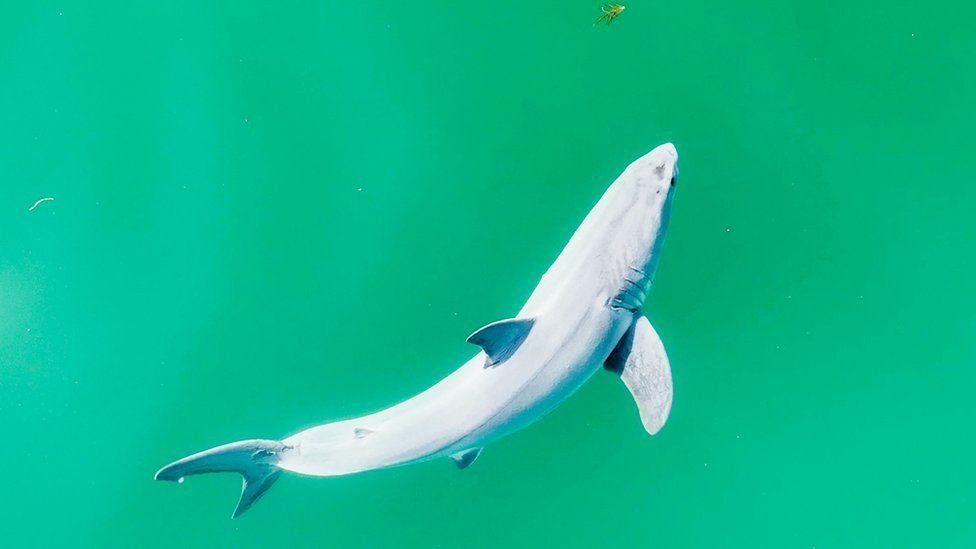A wildlife filmmaker, Carlos Gauna, and a biology doctoral student at UC Riverside, Phillip Sternes, believe they may have captured the first-ever footage of a newborn great white shark. Using a drone, they filmed a 5-foot-long white shark swimming 1,300 feet off the coast of Carpinteria, California, on July 9, 2023. The duo observed a shark with a pale color that appeared to have a thin white film covering its body. The researchers enlarged the images, put them in slow motion, and concluded that the whitish layer was being shed from the body as the shark swam, indicating a newborn shark shedding its embryonic layer.
The significance of this discovery lies in the fact that great white sharks, the largest predatory sharks responsible for the most fatal attacks on humans, have never been observed as newborns in the wild. Finding where white sharks give birth has been a longstanding mystery in shark science. No one has been able to pinpoint their birthing locations or witness a live newborn baby shark. While dead white sharks have been found inside deceased pregnant mothers, the recent footage by Gauna and Sternes provides a unique opportunity to observe a live newborn great white shark.
The duo’s observations also noted the presence of large, likely mature sharks in the same area before and after the sighting of the newborn. The shark’s pale color could be attributed to the shedding of intrauterine substances as it is a newborn or potentially indicates an unknown skin disorder not reported before in white sharks, which would be a significant finding on its own.
The findings have been published in the peer-reviewed journal Environmental Biology of Fishes, emphasizing the crucial significance of Southern California to Eastern Pacific white sharks. While white sharks are highly protected off the California coast, unintentional catches by fishermen occasionally occur. The discovery of a newborn great white shark in this region underscores the importance of the area as a definitive birthing location.
Despite intense interest in white sharks, no one had previously observed the birth or a newborn pup in the wild. This newfound evidence potentially establishes the location as a birthing ground for great white sharks. However, further research is needed to confirm this hypothesis, and if proven true, researchers and lawmakers may need to take steps to protect these waters to ensure the continued thriving of white sharks.
Great white sharks are known for their aggressive nature and are responsible for the highest number of unprovoked attacks among all shark species worldwide. While they have gained a fearsome reputation, recent research suggests that attacks on humans may be unintentional and related to the predator’s poor eyesight. Based on a recent study and a status review by NOAA Fisheries, the population of white sharks in the northeastern Pacific appears to be increasing, and they are not currently considered at risk of becoming endangered in US waters. Sternes emphasizes the need for further research to confirm the waters as a great white breeding ground, urging lawmakers to step in and protect these areas to support the continued thriving of white sharks.
